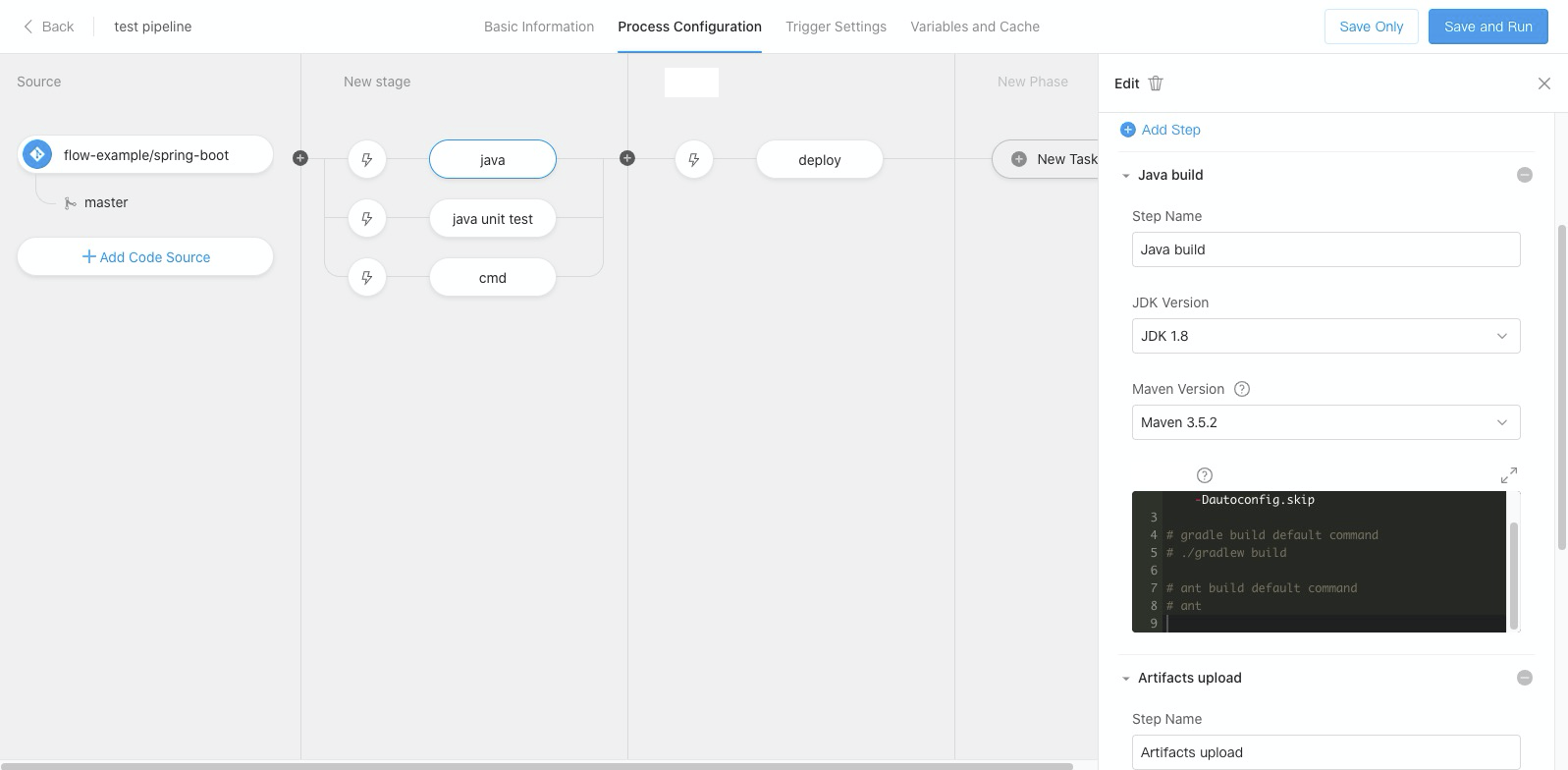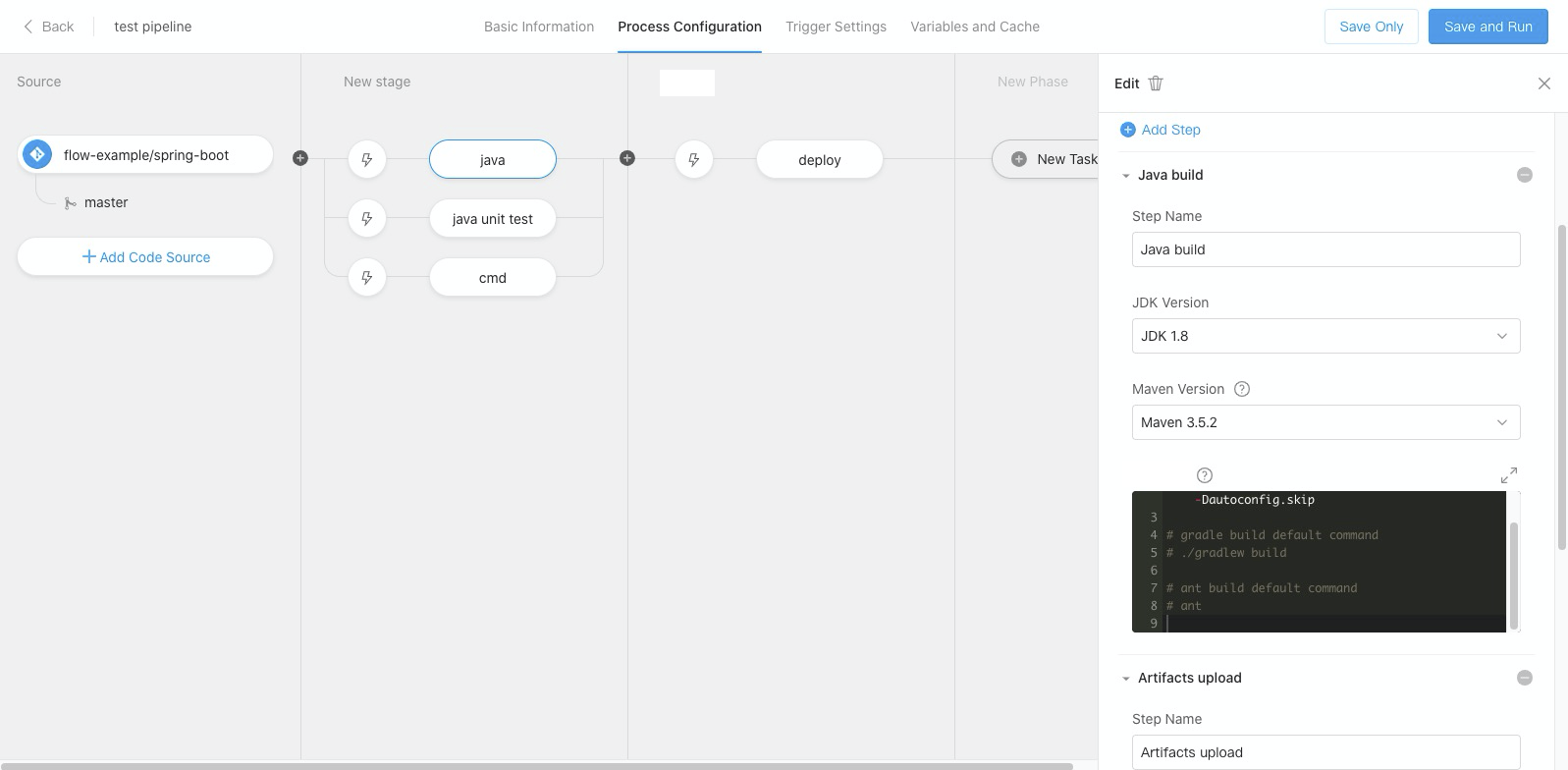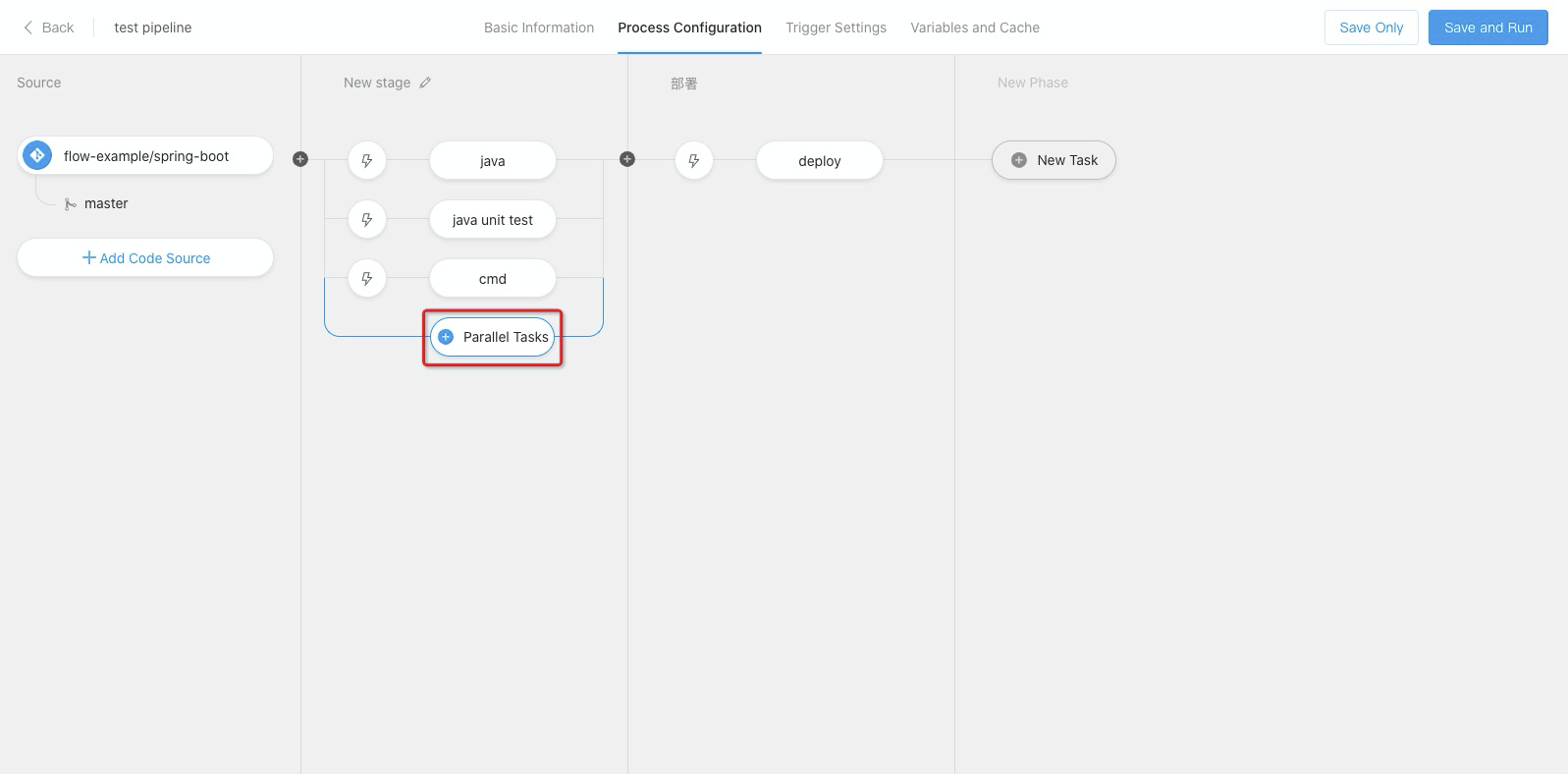Pipeline orchestration allows you to define automated processes for continuous delivery. You can orchestrate component capabilities such as building, deployment, testing, and control to enable automation of your business from development to release.
The pipeline feature in Flow provides the following orchestration capabilities:
Phase: A collection of tasks to be executed in a pipeline. A phase can be executed manually or automatically. Two phases are executed in sequence.
Task: The action to be completed during a phase. Two tasks can be executed in sequence or in parallel. Typical task types include code scanning, unit testing, building, deployment, code merging, and manual approval.
Step: the core underlying capability in Flow. A pipeline consists of a series of orchestrated steps.
Add a phase
On the Process Configuration page, click the + icon to add a phase. After a phase is created, a default task is generated for the phase. You can select a task template to quickly add a task to the current phase.

After a task is created, click the task card to configure the task.

Add a task to a phase
Add a parallel task
On the Process Configuration page, when you move the pointer over a phase, the + Parallel Task button appears. Click the button, select a task template, and configure the parameters to add a parallel task. 
Add a sequential task
On the Process Configuration page, when you move the pointer over a task, the + icon appears. Click the icon, select a task template, and configure the parameters to add a sequential task. 